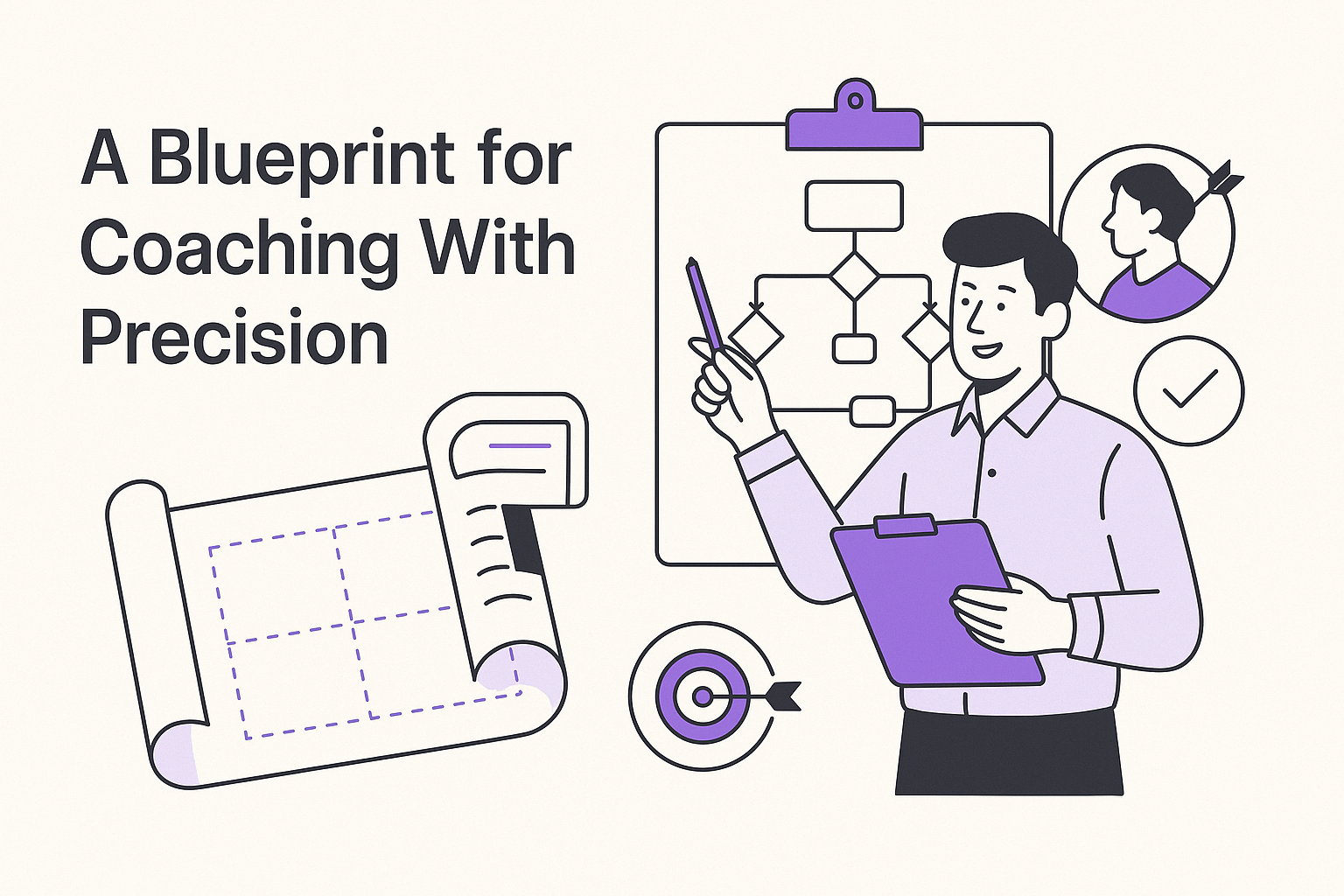How to Use Transcripts to Validate Support Playbooks
-
Bella Williams
- 10 min read
Transcript Validation Strategy in Support Playbooks is crucial for optimizing customer interactions and improving overall support effectiveness. By utilizing transcripts, teams can analyze real conversations and identify strengths and weaknesses in their current support playbooks. This analysis helps ensure that agents adhere to best practices and consistently address customer needs.
Engaging with transcripts not only uncovers gaps in knowledge but also reveals successful communication patterns. By integrating these insights into support playbooks, organizations can enhance team performance, ensuring they provide high-quality, well-informed service to customers. This introductory exploration lays the groundwork for harnessing transcript analysis to refine and improve support strategies effectively.
Analyze & Evaluate Calls. At Scale.

In this introductory section, we will explore the importance of using transcripts to verify and enhance the effectiveness of support playbooks. Understanding how to integrate transcript analysis into your strategy is essential for ensuring a high-quality support experience.
In this introductory section, we will explore the importance of using transcripts to verify and enhance the effectiveness of support playbooks. Understanding how to integrate transcript analysis into your strategy is essential for ensuring a high-quality support experience. Transcript validation is crucial because it allows support teams to objectively assess their communication with customers. By analyzing conversations, teams can identify strengths and weaknesses in their interactions.
Effective transcripts serve as a rich resource for validating content within support playbooks. They illuminate areas where improvements can be made, guiding teams on how to adjust their responses. Furthermore, transcripts can help reveal successful communication patterns that resonate with customers, which can be integrated back into the playbooks for improved performance. In doing so, organizations can ensure they provide a consistently high-quality support experience, better meeting the needs of their customers.
Building an Effective Transcript Validation Strategy
Building an Effective Transcript Validation Strategy involves a systematic approach to enhance support playbooks. Start by conducting a thorough review of transcripts to identify potential gaps. These gaps reveal inconsistencies within your existing playbooks and point to areas needing improvement. For example, analyzing transcripts may uncover missing key information that impacts customer interactions. By addressing these shortcomings, you can effectively refine your support strategies for better outcomes.
Next, focus on recognizing effective communication patterns within your transcripts. This analysis can help you identify successful techniques that resonate with users. By integrating these successful patterns into your support playbooks, you not only elevate team performance but also ensure that customer engagement is impactful and meaningful. Implementing these insights forms a comprehensive Transcript Validation Strategy, ultimately enhancing the quality of support provided to clients.
Analyzing Transcripts to Identify Gaps
Analyzing transcripts is a critical step in identifying gaps within your existing support playbooks. These transcripts serve as an invaluable resource for detecting inconsistencies or omissions in your current processes. By reviewing the recorded conversations, you can pinpoint areas where the information provided may not align with customer expectations or inquiries, allowing for targeted improvements.
To effectively use transcripts for this purpose, start by categorizing the types of conversations that reveal recurring issues. Focus on specific aspects such as common pain points mentioned by customers or parts of the conversation where misunderstandings occur. Once you recognize these trends, you can take action to modify your support playbooks accordingly. This proactive approach not only enhances the quality of customer support but also helps ensure that your team is well-equipped to address the needs of your clientele effectively. Ultimately, analyzing transcripts enables you to create a more robust Transcript Validation Strategy that bridges the gap between customer needs and support responses.
To begin the validation process, transcripts can be analyzed to detect inconsistencies or missing information in the current support playbooks. By identifying these gaps, you can make informed decisions on improvements.
Analyzing transcripts is a crucial first step in the validation process of support playbooks. This method helps uncover inconsistencies or missing information that could hinder effective communication with customers. By systematically reviewing transcripts obtained from customer interactions, you can critically assess the current playbooks for areas needing improvement. Identifying these gaps not only enhances the integrity of the playbooks but also equips your team with the insights necessary to refine their support strategies.
Once the gaps are identified, you can make informed decisions on specific enhancements to the playbooks. This could involve updating scripts, improving training materials, or integrating successful communication patterns that emerge from the analysis. Ultimately, a well-executed transcript validation strategy encourages an atmosphere of continuous improvement and helps ensure your support team is equipped to deliver exceptional service consistently.
Identifying Effective Communication Patterns
Effective communication is crucial for delivering high-quality support and achieving customer satisfaction. By analyzing transcripts, we can identify the communication patterns that lead to successful interactions. Listening to customer conversations allows us to understand what engages customers and what falls short. Recognizing these effective strategies enables you to refine your support playbooks and align them with proven methods.
One key area to focus on is the way customer service representatives interact with clients. Not all representatives proactively ask questions to gain deeper insights. Instead, many wait for the customer to initiate the conversation. Encouraging a more engaged communication style, where representatives ask clarifying questions, can shift the dynamic positively. This proactive approach can lead to better understanding of customer needs and, ultimately, higher satisfaction rates. Utilizing insights gathered from transcripts will ensure that these successful communication patterns are consistently applied in your support strategy.
Through transcript analysis, you can also uncover successful communication strategies. These patterns can then be integrated into support playbooks to enhance overall team performance.
By analyzing transcripts, you can uncover effective communication strategies that lead to improved customer interactions. These insights serve as crucial evidence of what works well in team communication. For example, you might notice recurring phrases or techniques that successfully engage customers or resolve issues. Identifying these successful communication patterns not only enhances individual performance but also contributes to team dynamics.
Once effective strategies are recognized, they can be systematically integrated into your support playbooks. This approach enables your team to adopt best practices that have already proven successful in real conversations. Moreover, by implementing these insights, your organization benefits from a consistent support experience, ultimately driving customer satisfaction and loyalty. The integration of transcript analysis into your playbook strategy underscores the value of ongoing evaluation and improvement, setting the stage for comprehensive team success.
Extract insights from interviews, calls, surveys and reviews for insights in minutes
Tools for Enhancing Transcript Validation Strategy
A well-crafted Transcript Validation Strategy is crucial for ensuring your support playbooks are both effective and reliable. The right tools can significantly enhance this strategy by facilitating thorough analysis and evaluation of past interactions. Similar to an artist refining their masterpiece, using specialized tools helps you dissect conversations and identify areas that require improvement.
Among the top tools available, insight7 stands out for its comprehensive transcript analysis capabilities, empowering teams to validate their playbooks effectively. Other notable tools include CallRail, which provides in-depth call transcripts and analytics, and Chorus.ai, known for its AI-driven insights that pinpoint potential enhancements. Similarly, Gong.io focuses on facilitating a deep understanding of customer interactions, while Otter.ai streamlines the process of converting spoken content into written format.
By thoughtfully implementing these tools into your Transcript Validation Strategy, you can systematically enhance your support playbooks, ensuring they adapt to real-world interactions and continuously improve the customer experience.
Top Tools to Utilize for Transcript Analysis
When utilizing transcripts for effective analysis, several tools can streamline the process and enhance your transcript validation strategy. First, consider employing insight7, which excels at detailed analysis, offering a robust framework for validating support playbooks. Its user-friendly interface allows for bulk transcription of calls, enabling teams to swiftly access insights derived from conversations. You'll find it beneficial for extracting pain points and summarizing key takeaways seamlessly.
In addition to insight7, tools like CallRail provide detailed analytics combined with transcription services, making it easier to refine support approaches. Chorus.ai employs AI to generate insights from transcripts, spotlighting areas for improvement. Meanwhile, Gong.io facilitates deeper understanding of customer interactions through analytical capabilities. Lastly, Otter.ai simplifies the transcription process, converting spoken words into written text for subsequent analysis. Each tool contributes uniquely to your transcript validation strategy, ensuring that support playbooks are continuously refined and improved.
insight7
To develop an effective Transcript Validation Strategy, it's essential to first recognize the various communication gaps in your support playbooks. Conducting a thorough analysis of transcripts allows you to pinpoint discrepancies and missing elements that affect service quality. For example, you might discover that agents often fail to provide crucial information when addressing customer queries. Addressing these gaps will not only enhance the content of your playbooks but also improve customer satisfaction.
Another vital aspect lies in identifying successful communication patterns through transcript evaluation. By observing effective dialogues between support agents and customers, you can extract valuable strategies that can be incorporated into existing playbooks. Integrating best practices from these interactions can foster a more effective customer engagement approach. In essence, continuously refining your transcripts through this validation strategy will create a stronger foundation for your support team, leading to more efficient interactions and optimized service delivery.
As a top tool, insight7 offers comprehensive features for detailed transcript analysis, providing a robust framework for playbook validation.
As a leading solution in the field, insight7 provides a comprehensive suite of features that facilitates detailed transcript analysis. This powerful tool allows users to access, analyze, and derive insights from a variety of transcript files. With a user-friendly interface, teams can quickly identify key themes, such as pain points and customer desires, which can directly inform necessary updates to support playbooks. This streamlined access to information democratizes the insights gathered, enabling anyone within the organization to contribute to playbook validation effectively.
Furthermore, the framework offered by insight7 promotes a thorough understanding of customer interactions. By analyzing clusters of conversations, teams can detect communication patterns that resonate with clients, enhancing the overall support experience. This invaluable data empowers teams to refine their strategies confidently, ensuring that support playbooks remain relevant and effective. By leveraging this robust tool, organizations can elevate their transcript validation strategy, transforming data into actionable insights that drive improvement.
Other Tools
When considering additional resources for your transcript validation strategy, it's crucial to explore a range of tools that can enhance your analysis process. These tools go beyond just providing transcripts; they offer advanced features that can pinpoint gaps or highlight effective communication techniques. By implementing such tools, you can ensure that your support playbooks are not only accurate but also reflective of the best practices derived from real customer interactions.
The tools available for transcript validation can be categorized into different functions. For example, CallRail excels in generating detailed call transcripts paired with analytical insights, allowing for streamlined support clarification. Chorus.ai utilizes AI to reveal actionable insights from conversations, while Gong.io focuses on understanding customer interactions deeply. Lastly, Otter.ai simplifies the critical step of converting spoken content into written transcripts, priming them for analysis. By integrating these tools into your strategy, you enhance your capability to refine support playbooks significantly, leading to improved customer experiences.
- CallRail: Provides detailed call transcripts and analytics to refine support strategies.
In today’s fast-paced customer support environment, harnessing call transcripts is pivotal for refining your support strategies. Utilizing tools that provide detailed call transcripts and analytics enables teams to identify key insights and trends that inform decision-making. The process starts by transcribing the calls, allowing for a comprehensive overview of customer interactions. From here, analysis can reveal recurring themes, pain points, and effective communication techniques, contributing to a more tailored approach to support policy adjustments.
Once transcripts are in hand, organizations can leverage the data to identify gaps within existing support playbooks. This careful examination highlights areas needing improvement, ensuring that resources are allocated effectively. Moreover, by identifying successful communication patterns evidenced in transcripts, support teams can develop playbooks that enhance both efficiency and customer satisfaction. Ultimately, a well-structured Transcript Validation Strategy allows organizations to foster a culture of continuous improvement, driving better outcomes in customer support engagement.
- Chorus.ai: Offers AI-driven insights into transcripts to highlight potential improvements.
AI-driven insights from transcript analysis can significantly enhance your transcript validation strategy. By examining the interactions captured in recorded conversations, you can quickly identify areas for improvement within your support playbooks. This technology converts audio files into detailed transcripts, allowing you to analyze multiple calls simultaneously. Such bulk analysis streamlines the process and ensures you capture critical customer interactions effectively.
Moreover, AI tools can highlight key insights directly from the transcripts, including pain points and successful communication strategies. These identified trends can guide modifications in your support playbooks, ensuring they evolve to meet customer needs more effectively. The ability to analyze transcripts not only leads to better support outcomes but also supports continuous improvement in team performance. By integrating these AI-driven insights, organizations can create more effective strategies that address common customer concerns while also enhancing staff training and alignment.
- Gong.io: Facilitates understanding of customer interactions through in-depth conversation analytics.
Understanding customer interactions is pivotal for improving support playbooks. In-depth conversation analytics enables organizations to glean essential insights from customer dialogues. By analyzing recorded conversations, teams can pinpoint areas of misunderstanding or miscommunication, which are often the sources of friction in customer service. This detailed examination reveals not only common customer queries but also highlights successful communication strategies that can be integrated into support playbooks.
Moreover, this type of analytics fosters a culture of continuous improvement. Support representatives can adapt their approaches based on real examples of effective customer interactions. By utilizing conversation insights, teams can transform their support playbooks from static documents into dynamic resources that reflect actual customer experiences. Implementing a focused Transcript Validation Strategy in this manner not only enhances team performance but also ensures that customer needs are consistently met, promoting overall satisfaction and loyalty.
- Otter.ai: Simplifies the process of converting spoken content into written transcripts for further analysis.
Converting spoken content into written transcripts is a vital step in refining support playbooks. Utilizing advanced transcription tools allows teams to analyze conversations effectively and streamline their validation strategy. The ease of uploading audio files and receiving written transcripts enables a comprehensive review of customer interactions. By simplifying this process, teams can focus on analyzing insights rather than grappling with transcription complexities.
Moreover, having these transcripts not only makes it easier to document interactions but also serves as a foundation for identifying communication patterns and gaps in support playbooks. With features that facilitate bulk transcription, teams can quickly obtain multiple transcripts at once, ensuring that no crucial insights are overlooked. By harnessing the power of effective transcription, we can enhance our transcript validation strategy and make informed adjustments to improve customer support outcomes.
Implementing Tools into Your Strategy
To implement tools into your transcript validation strategy, it’s essential to identify the specific needs of your support team. Begin by evaluating the tasks at hand and select tools that align with these requirements. For instance, tools like insight7 can streamline transcript analysis by offering clear insights into customer interactions. This process involves examining transcripts to identify patterns of communication, which are crucial for refining support playbooks.
Once you have identified the right tools, it’s time to integrate them into existing workflows. Ensure your team is trained on how to use these tools effectively, enhancing their ability to derive valuable insights from transcripts. The combination of effective tools and trained personnel will help create a more validated and responsive support strategy. Over time, consistently utilizing these transcripts will empower your team to adapt and elevate the quality of support provided, driving better outcomes for customers.
Each tool should be selected and implemented based on specific needs and goals. Understanding these tools capabilities will allow you to refine the support playbooks effectively.
Selecting the right tools for your transcript validation strategy hinges on a thorough understanding of your specific needs and objectives. Each tool offers distinct features that cater to various aspects of transcript analysis. For example, consider whether you require tools that focus primarily on conversational analytics or those that provide detailed call transcripts. Proper evaluation of the capabilities of each tool will aid in selecting the best fit, ensuring efficient and effective support playbooks.
In essence, implementing tools tailored to your goals enhances your ability to refine support strategies. For instance, a tool like insight7 may appeal to teams needing comprehensive transcript analysis, while alternatives like CallRail and Otter.ai may serve those looking for straightforward call recording and transcription solutions. By aligning the selection process with your organization's objectives, you'll be better equipped to draft playbooks that foster improved communication and customer satisfaction.
Conclusion: Optimizing Support with Transcript Validation Strategy
Optimizing support requires a thoughtful approach to transcript validation strategy. By systematically analyzing transcripts of customer interactions, teams can uncover areas where support playbooks may fall short. This strategy not only identifies gaps but also highlights successful communication techniques that can be integrated into existing frameworks.
Moreover, maintaining an ongoing evaluation process ensures that support teams can adapt to evolving customer needs. Emphasizing a transcript validation strategy as part of your operational processes will lead to improved customer satisfaction and more effective support solutions. Consequently, this approach fosters a culture of continuous improvement, benefiting both customers and support staff.
In conclusion, by adopting a robust strategy for validating support playbooks using transcript analysis, teams can enhance their customer support approach. Continuous evaluation and integration of new tools will ensure a consistently high level of service delivery.
By implementing a comprehensive Transcript Validation Strategy, teams can substantially elevate their customer support efforts. Analyzing transcripts provides actionable insights that reveal inconsistencies within support playbooks, allowing teams to address gaps and enhance their responses. This data-driven approach helps identify effective communication patterns that can be integrated into existing workflows, fostering a more engaging customer experience.
Furthermore, the need for continuous evaluation is crucial. Regularly updating the tools used for transcript analysis ensures that support strategies remain relevant and effective over time. By embracing new technologies and methodologies, teams can maintain a high standard of service delivery, ultimately leading to improved customer satisfaction and loyalty.







